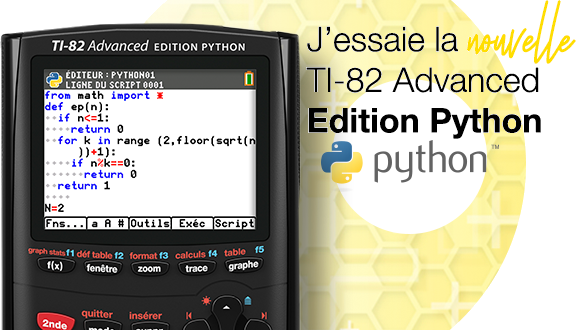Read this tutorial in English here.
Comment utiliser la loi normale et la loi binomiale
sur votre calculette ?
sur votre calculette ?
Les fonctions dont je parle ci-dessous sont disponibles sur presque toutes les calculettes TI.
On les trouve sur les Nspire (CAS ou non), sur les 82stats.fr, les 83+/84+ (ci-dessous nommées z80), et on peut aussi les installer sur TI92+, TI89 Titanium ou V200 (ci-dessous nommées 68k) (regarder à cette adresse pour savoir comment).
Pour utiliser ces fonctions, il suffit d'aller les chercher dans le catalogue :
On les trouve sur les Nspire (CAS ou non), sur les 82stats.fr, les 83+/84+ (ci-dessous nommées z80), et on peut aussi les installer sur TI92+, TI89 Titanium ou V200 (ci-dessous nommées 68k) (regarder à cette adresse pour savoir comment).
Pour utiliser ces fonctions, il suffit d'aller les chercher dans le catalogue :
- Sur Nspire, appuyer sur
![[book] :nsbi:](./images/smilies/nspire/ns_bi.png)
- Sur z80, appuyer sur
![[2nde/2nd] :f21:](./images/smilies/z80/21.png)
![[0] :f102:](./images/smilies/z80/102.png)
- Sur 68k, appuyer sur
Catalog
puisF3
Sur z80, les noms des fonctions sont légèrement différents de ceux indiqués. Faites un petit effort d'imagination en attendant que j'ai mis à jour le tuto...
1. Les fonctions relatives à la loi normale sont :
- normCdf (ou normFdR en français, pour Fonction de Répartition)
normCdf(a,b)renverra la probabilité$mathjax$\mathbb{P}(a<X<b)$mathjax$suivant la loi normale centrée réduite.normCdf(a,b,m,s)renverra la probabilité$mathjax$\mathbb{P}(a<X<b)$mathjax$suivant la loi normale de moyenne m et d'écart-type s.
Astuce : Pour calculer$mathjax$\mathbb{P}(X<b)$mathjax$, il suffit de tapernormCdf(-∞,b)et pour calculer$mathjax$\mathbb{P}(X>a)$mathjax$, il suffit de tapernormCdf(a,∞).Sur z80, remplacer ∞ par E99
Sur Nspire non-CAS, remplacer ∞ par 9E999 - normPdf (ou normDdP en français, pour Distribution de Probabilité)
normPdf(x)renverra la valeur$mathjax$\frac{e^{-\frac{x^2}{2}}}{\sqrt{2\pi}}$mathjax$de la densité de probabilité de la loi normale centrée réduite.normPdf(x,m,s)renverra la valeur$mathjax$\frac{e^{-\frac{(x-m)^2}{2s^2}}}{s\sqrt{2\pi}}$mathjax$de la densité de probabilité de la loi normale de moyenne m et d'écart-type s. - invNorm
invNorm(p)renverra la valeur de b telle que$mathjax$\mathbb{P}(X<b)=p$mathjax$, suivant la loi normale centrée réduite.invNorm(p,m,s)renverra la valeur de b telle que$mathjax$\mathbb{P}(X<b)=p$mathjax$, suivant la loi normale de moyenne m et d'écart-type s.
Astuces : Pour trouver une valeur b telle que$mathjax$\mathbb{P}(-b<X<b)=p$mathjax$, suivant la loi normale centrée réduite, on peut ruser en remarquant que$mathjax$\mathbb{P}(-b<X<b)=\mathbb{P}(X<b)-\mathbb{P}(X\leq -b)=\mathbb{P}(X<b)-(1-\mathbb{P}(-X<b))=2\mathbb{P}(X<b)-1$mathjax$car X et -X suivent la même loi dans ce cas. Ainsi, il suffit de taperinvNorm((p+1)/2)
De même, pour trouver une valeur b telle que$mathjax$\mathbb{P}(m-b<X<m+b)=p$mathjax$, suivant la loi normale de moyenne m et d'écart-type s, il suffit de taperinvNorm((p+1)/2,m,s)-m - randNorm (ou normAléa en français)
randNorm()renverra au hasard une valeur prise par une variable aléatoire suivant la loi normale centrée réduite.randNorm(m,s)renverra au hasard une valeur prise par une variable aléatoire suivant la loi normale de moyenne m et d'écart-type s.randNorm(m,s,N)renverra au hasard une liste de N valeurs prises par une variable aléatoire suivant la loi normale de moyenne m et d'écart-type s.randNorm(0,1,N)renverra au hasard une liste de N valeurs prises par une variable aléatoire suivant la loi normale centrée réduite. - shadNorm (ou ombrNorm en français)
shadNorm(a,b)trace la gaussienne centrée réduite et hachure la zone entre X=a et X=b.shadNorm(a,b,m,s)trace la gaussienne de moyenne m et d'écart-type s et hachure la zone entre X=a et X=b.
2. Les fonctions relatives à la loi binomiale sont :
- binomCdf (ou binomFdR en français, pour Fonction de Répartition)
binomCdf(N,p)renverra la fonction de répartition d'une loi binomiale de paramètres N et p sous la forme d'une liste des probabilités$mathjax$\mathbb{P}(X\leq k)$mathjax$lorsque k varie de 0 à N.binomCdf(N,p,a,b)renverra la probabilité$mathjax$\mathbb{P}(a<X≤b)$mathjax$(ou encore$mathjax$\mathbb{P}(X\leq b)-\mathbb{P}(X\leq a)$mathjax$) pour une loi binomiale de paramètres N et p.
Astuce : Pour calculer$mathjax$\mathbb{P}(X\geq a)$mathjax$, il suffit de calculer$mathjax$\mathbb{P}(a-1 < X \leq N)$mathjax$, en tapant doncbinomCdf(N,p,a-1,N) - binomPdf (ou binomDdP en français, pour Distribution de Probabilité)
binomPdf(N,p)renverra la liste des probabilités$mathjax$\mathbb{P}(X=k)$mathjax$lorsque k varie de 0 à N pour une loi binomiale de paramètres N et p.binomPdf(N,p,k)renverra la probabilité$mathjax$\mathbb{P}(X=k)$mathjax$pour une loi binomiale de paramètres N et p. - randBin (ou binAléa en français)
randBin(N,p)renverra au hasard une valeur entière entre 0 et N prise par une variable aléatoire suivant une loi binomiale de paramètres N et p.randBin(N,p,nb)renverra au hasard une liste de nb valeurs entières entre 0 et N prise par une variable aléatoire suivant une loi binomiale de paramètres N et p.
Vous pouvez aussi trouver plein d'autres fonctions, par exemple sur la loi de Poisson, la loi géométrique, le test du Chi2, le test ANOVA, etc...
Pour conclure, Alain Charles a également conçu d'excellents programmes pour les intervalles de fluctuation. Vous en trouverez la liste ICI. Choisissez celui qui est adapté à votre calculette !
Lisez ce tutoriel en français à cette adresse.
How to use normal and binomial distributions on your calculator ?
The functions I am talking about in this tutorial are available on almost any TI calculator. They can be found on Nspire (CAS or not), on 82stats, on 83+/84+, and you can even install them on TI92+, TI89 Titanium or V200 (check here to know how).
To use them, just fetch them in the catalog :
To use them, just fetch them in the catalog :
- On Nspire, press
![[book] :nsbi:](./images/smilies/nspire/ns_bi.png)
- On z80, press
![[2nde/2nd] :f21:](./images/smilies/z80/21.png)
![[0] :f102:](./images/smilies/z80/102.png)
- On 68k, press
Catalog
thenF3
On z80, the names of the functions are slightly different from the ones listed below. Use your imagination until I get this tutorial up to date...
1. Functions dealing with normal distribution are :
- normCdf (Cumulative Distribution Function)
normCdf(a,b)will calculate the probability$mathjax$\mathbb{P}(a<X<b)$mathjax$using standard normal distribution.normCdf(a,b,m,s)will calculate the probability$mathjax$\mathbb{P}(a<X<b)$mathjax$using normal distribution with mean m and deviation s.
Tip : To calculate$mathjax$\mathbb{P}(X<b)$mathjax$, just typenormCdf(-∞,b)and for$mathjax$\mathbb{P}(X>a)$mathjax$, just typenormCdf(a,∞).On z80, use E99 instead of ∞. - normPdf (Probability Density function)
normPdf(x)will calculate the value$mathjax$\frac{e^{-\frac{x^2}{2}}}{\sqrt{2\pi}}$mathjax$of probability density of standard normal distribution.normPdf(x,m,s)will calculate the value$mathjax$\frac{e^{-\frac{(x-m)^2}{2s^2}}}{s\sqrt{2\pi}}$mathjax$of probability density of normal distribution with mean m and deviation s. - invNorm
invNorm(p)will compute the value of b for which$mathjax$\mathbb{P}(X<b)=p$mathjax$, according to standard normal distribution.invNorm(p,m,s)will compute the value of b for which$mathjax$\mathbb{P}(X<b)=p$mathjax$, according to normal distribution with mean m and deviance s.
Tips : To find a value b for which$mathjax$\mathbb{P}(-b<X<b)=p$mathjax$, according to standard normal distribution, you can notice that$mathjax$\mathbb{P}(-b<X<b)=\mathbb{P}(X<b)-\mathbb{P}(X\leq -b)=\mathbb{P}(X<b)-(1-\mathbb{P}(-X<b))=2\mathbb{P}(X<b)-1$mathjax$for X and -X both follow standard normal distribution. Hence, just typeinvNorm((p+1)/2)
Following, if you wish to find b for which$mathjax$\mathbb{P}(m-b<X<m+b)=p$mathjax$, according to normal distribution with mean m and deviance s, just typeinvNorm((p+1)/2,m,s)-m - randNorm
randNorm()will randomly return a value of a random variable following standard normal distribution.randNorm(m,s)will randomly return a value of a random variable following normal distribution with mean m and deviance s.randNorm(m,s,N)will randomly return a list of N values taken by a random variable following normal distribution with mean m and deviance s.randNorm(0,1,N)will randomly return a list of N values taken by a random variable following standard normal distribution. - shadNorm
shadNorm(a,b)graphs the Gaussian standard curve and shades underneath it from X=a to X=b.shadNorm(a,b,m,s)graphs the Gaussian curve with mean m and deviance s and shades underneath it from X=a to X=b.
2. Functions dealing with binomial distributions are :
- binomCdf (Cumulative distribution function)
binomCdf(N,p)will return a list of probabilities$mathjax$\mathbb{P}(X\leq k)$mathjax$for k from 0 to N, for the binomial distribution with parameters N and p.binomCdf(N,p,a,b)will return the value of probability$mathjax$\mathbb{P}(a<X\leq b)$mathjax$(or$mathjax$\mathbb{P}(X\leq b)-\mathbb{P}(X\leq a)$mathjax$) for the binomial distribution with parameters N and p.
Tip : To get the value of$mathjax$\mathbb{P}(X\geq a)$mathjax$, just compute$mathjax$\mathbb{P}(a-1<X\leq N)$mathjax$by typingbinomCdf(N,p,a-1,N) - binomPdf (Probability distribution function)
binomPdf(N,p)will return a list of probabilities$mathjax$\mathbb{P}(X=k)$mathjax$for k from 0 to N, for the binomial distribution with parameters N and p.binomPdf(N,p,k)will return the value of probability$mathjax$\mathbb{P}(X=k)$mathjax$for the binomial distribution with parameters N and p. - randBin
randBin(N,p)will randomly return an integer value between 0 and N taken by a random variable following binomial distribution with parameters N and p.randBin(N,p,nb)will return a list of nb integer values between 0 and N taken by a random variable following binomial distribution with parameters N and p..
You can also find many other functions, dealing with, for example, Poisson distribution, geometric distribution, Chi2 test, ANOVA test, etc...
As a conclusion, Alain Charles also made some excellent programs for fluctuation intervals. Here is their list. Just choose the one adapted fo your calc !
























